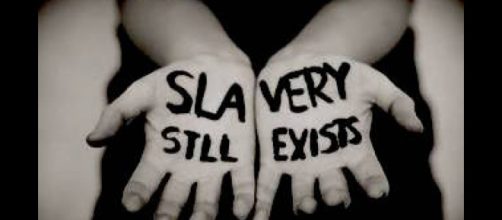We live in a world that has too easily accepted and adapted itself to injustice and inequality in too many of its forms. One of the ugliest kinds of injustices imaginable is Human Trafficking. Human trafficking is a type of illegal trade that exists mainly for the purpose of sexual slavery and forced labor. In this exchange, the vulnerable are exploited, stripped of their dignity and value and made to serve the more powerful.
Where does it happen?
Human trafficking is a global phenomenon.
In India, “the number of registered human trafficking cases has increased by 38.3 percent over five years from 2,848 in 2009 to 3,940 in 2013,” according to The Indian Express.
In an article by The Conversation Angie Motaung of Bana Ba Kae (“where are the children”), an NGO that works to relieve the struggle of children in poor communities in Pretoria, South Africa’s capital city, claims that “there could be as many as 1000 children missing from homes across the city.” The number of victims of human trafficking reported by the National Human Trafficking Resource Center in the United states, 3,646 in the year 2016 alone, 3,058 of them being female.
How are we fighting it?
In efforts to combat human trafficking, the #United States passed the t rafficking victims protection act of 2000 (TVPA) which made human trafficking a Federal Crime and according to the United Nations International Children's Emergency (UNICEF), has also helped provide parents with a living wage so that their children do not have to work and can attend school instead and worked with communities and organizations around the world to change societal norms that make children easy to exploit.
In India, efforts have also been made to fight their disturbingly prevalent trend of the buying and selling of women and children; different organizations are rising every day and using their resources to “take a stand and serve as a voice for those who are exploited and held against their will,” according to themuse. As optimistic as this all might seem, it remains true that t oo many stories have been told but not enough people have been rescued.
Can we do more?
The first step to bringing about change, is to acknowledge that the problem of human trafficking is one that affects men as it does women. A problem that affects so many women and so many children is a problem that affects the society at large.
This kind of unjustified trade and #enslavement of human beings in our world today reflects a degenerate and corrupt state of affairs. Secondly, a major modification needs to take place in the #education system everywhere around the world. Ethics need to be integrated in the curriculums implemented at school, it is as important to learn how to behave in the world as an individual as it is to learn how to use a computer so that the boys and girls in the classrooms do not grow up to be the men and women who are so easily ready to exploit each other or exploit children for the sake of making money and/or otherwise. The last proposition I suggest is a change in media. The world needs a #media strategy that helps build its citizens not break them, that does not promote women as products.
A kind of media presence that empowers; women, men and children.
Human trafficking is a practice of human societies with roots in our worst instincts, predicated on the all too #human tendency of the powerful to prey on the powerless. Human trafficking, in its modern form, is simply slavery redux. We suffer from a failure of #language and imagination when we describe human trafficking as modern, as a problem for or of women, as anything but what it is: a re-packaged form of (at least) the British imperial practice of breaking up families and exporting slaves to the New World. Human trafficking is a moral, social, economic, political and cultural abomination that should be opposed in all its forms - what the American President Abraham Lincoln would have called an insult to all human dignity.

